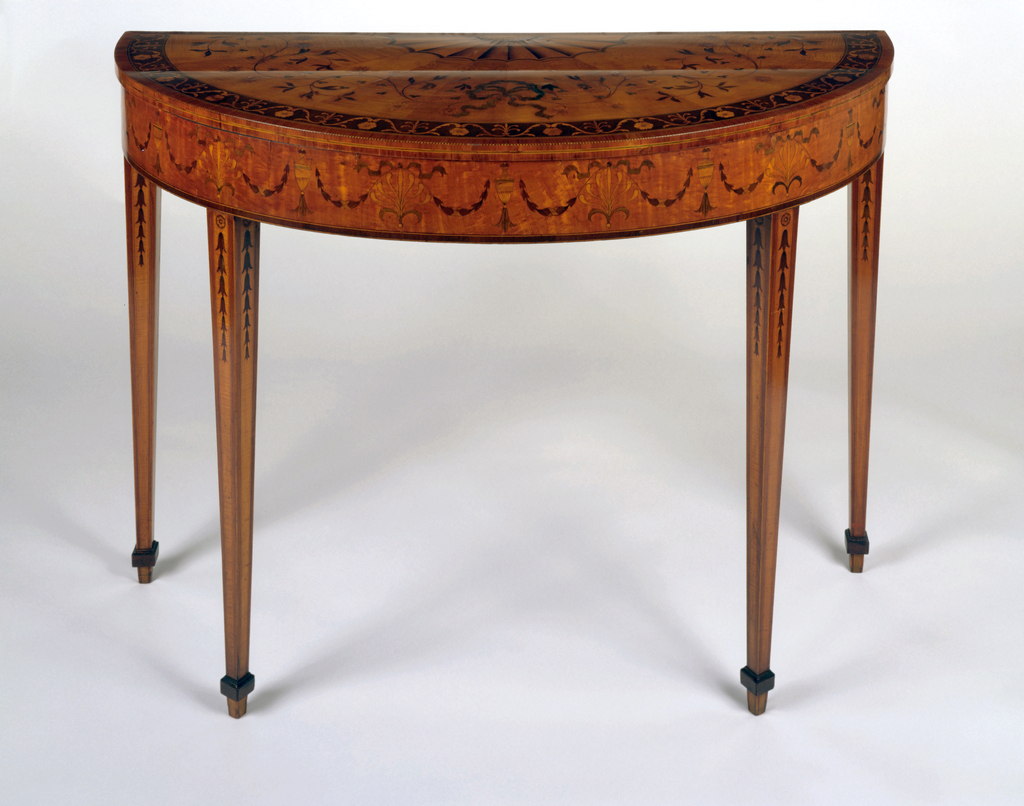A collector of English furniture once asked me if I recognized who might have made a chest of drawers he had purchased. It had beautifully executed inlays and was in an early neo-classical style that appeared to say it was made in London. In fact, the inlays looked like the work of the firm of cabinetmakers Mayhew and Ince who produced very fine furniture there from about 1759-1800, much of which featured sophisticated inlays in the style popularized by architect Robert Adam, with whom they worked. However, there was more whimsy in the style of the inlays on the chest. These included some vine-like trees that seemed to sway, which I came to call the “drunken tree” motif. I set about looking for the tree motif again and found it and other inlays re-appearing on a the work of a former employee of Mayhew and Ince, named William Moore often called “of Dublin”. Identification of Moore’s work is primarily based on a signed commode made for the Duke of Portland while the latter was in Dublin in 1782, after Moore’s return from London. In fact, Moore’s fine inlay work had shown promise in Ireland where he also attended a school of ornamental design before leaving for London. The Portland commode had several distinctive inlay motifs and an unusual method of construction using pine under the marquetry that are found in other pieces of furniture now attributed to Moore. The inlays with their whimsy are his designs: not only my drunken trees, which appeared on other pieces including some commodes at the Metropolitan Museum by him, but other whimsical inlays that appear on Cooper-Hewitt’s tables. These include urns sitting on upside-down bellflowers, and a motif that is a cross between a honeysuckle and a rather puffy and loopy anthemion that has little to do with the palm trees on which the ancients based this decorative motif. Both of these motifs are visible in the friezes of these tables. In fact the frieze on these tables is the same design as the frieze of both the Duke of Portland’s commode and another at the Victoria and Albert Museum. The inlay of the Cooper-Hewitt table tops has asymmetrical flowing ribbon-ties amidst trailing flowers and shamrocks that look as if the wind had blown them, but they are anchored by a fan shape that may reflect the decoration of what was probably a mirror above. I really enjoy that these pieces have such a breezy interpretation of what is a formal style.
Tombstone
Pair of Pier Tables, Attributed to William Moore, Irish, (d. 1814), Dublin, Ireland, ca. 1785, Satinwood, tulipwood, harewood and other woods,Gift of Neil Sellin, 1967-87-1a,b
Collection Record
